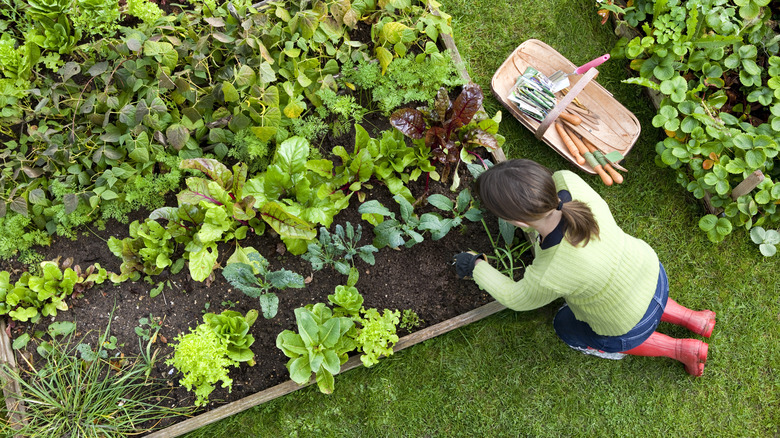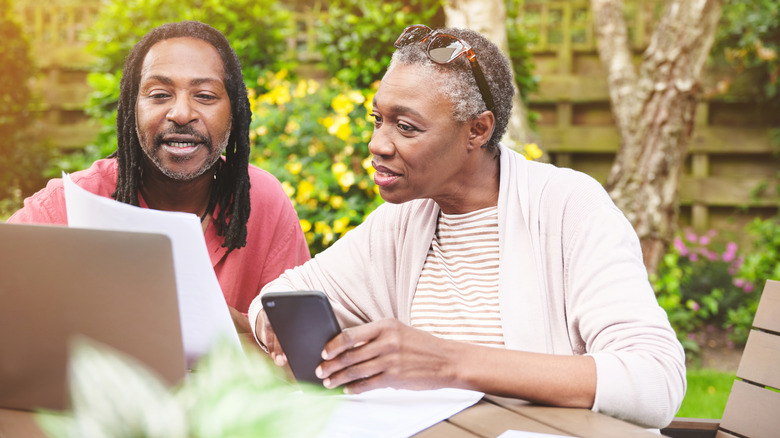All The Benefits Of Using A Digital Garden Calendar & How To Get Started
Whether you find it a chore or a joy, garden planning is necessary for creating and maintaining the best layout for your garden, be it a tiny urban backyard, balcony, or expansive rural acreage. You'll save money by no longer buying seeds for other climates and knowing exactly how many square feet of compost and potting mix you need to order for the spring. How you do this planning is another matter altogether. You could, of course, use an old-school paper calendar, but it's arguably not very intuitive. Going digital allows you to make changes on the fly, get email or phone notifications for everything from when to plant your carrot seeds to when to prune the lemon tree, and even create three-dimensional garden layouts.
Thumbing through notebooks or clicking browser bookmarks to find that webpage you're certain you know you saved isn't efficient. Digital planning websites and apps function more like a "second brain," an additional mental storage device you can manipulate, search through, and organize on demand. These tools are also easily personalized — and that's important. Research from KTH in Sweden suggests that gardening platforms with a customized user experience encourage people to get out into the garden.
Why smart gardeners use digital planners
Most gardeners quickly discover that they need more than just a calendar. For example, daily journaling, where you record all your garden goings-on, helps you determine what's actually happening in your garden, not only what you were expecting. It's a record that helps with future planning as well. Creating a layout for your garden lets you focus on the where of planting — by contrast, a paper calendar only assists you with the when. These strategies combined help you get your tomato seedlings in the ground on time for a bountiful harvest, better understand what conditions aphids thrive in, and, if garden space is tight, find unique ways to make your tiny garden look much more spacious.
There's a lot to consider; going digital simplifies the experience. Online spreadsheets, apps, or drag-and-drop garden design programs are user-friendly, even for the tech-challenged. Let's say you used the color wheel to design the perfect colorful garden. Not feeling those soft pink old-world roses anymore? Hit delete, and they're gone. Instantly duplicate last year's garden plan, rename the copy "2024," and add the new plants you want to grow or things you want to do differently this season. Most apps and online planners — even Google Docs, Sheets, and Slides — have notification options. Get an email reminder to plant your lettuce seedlings this week. Have your phone flash a banner reminding you the first frost date's approaching. You can also access these tools on most devices, freeing you from your desk.
Finding the right digital garden calendar
Gardening magazines have developed pretty great digital calendars and planners — The Old Farmer's Almanac and Mother Earth News are worth consulting. Large nurseries have also gotten in on board. If you have a food garden, try the oft-recommended GrowVeg or From Seed to Spoon apps. Bonus: These specialist options often provide helpful resources, including educational information, courses, community forums, and tech support. Another all-in-one tool that is featured in many top digital gardening planner lists is Smart Gardener. If you just want garden layout help, we recommend Gardena and Hortisketch. For DIYers, there are also online resources that describe how to plan your garden layout using Google Maps.
Once you've chosen a platform, consult the gardening calendars provided by horticultural experts in your county or state to personalize your plan. As well, the Almanac lists each year's first and last frost dates, and you can check your USDA Hardiness Zone by entering your postcode into the online finder. Work out what to plant where by consulting a companion planting chart. Remember to include reminders for critical garden maintenance you are probably neglecting.


